In the annals of human history, few events can rival the impact, intrigue, and awe that the Apollo moon missions stirred, resonating far beyond the American borders. When the first man landed on the moon in 1969, the world watched collectively with bated breath, as the possible was transformed into the actual. Countries globally reacted with varying sentiments, dictated by their socio-political landscapes. This epic feat’s ripple effects, straddling scientific, political, and cultural realms, germinated changes that undoubtedly altered the course of advancement on multiple fronts. This piece delineates these responses and ramifications, casting light on the breadth and depth of how the Apollo moon missions were perceived, integrated, and transitioned into the global narrative.
Contents
The immediate international response and public sentiment
International Responses to the Apollo Moon Missions: A Retrospective Analysis
In the annals of human history, few events have garnered an international reaction quite like the Apollo moon missions. Initiated in the tumultuous era of the Cold War, these missions were not just American initiatives, but global phenomena that forever altered our understanding of space exploration. This article seeks to deliver an impartial, comprehensive examination of the international perspective towards these pivotal events.
During the 1960s and 70s, the Apollo moon missions drew global attention with a combination of trepidation, excitement, and skepticism. While the United States, deeply embroiled in a space race with the Soviet Union, initiated these missions with a blend of patriotic fervor and scientific curiosity, the responses of other nations varied significantly.
In the USSR, the stakes were palpably high. The Soviet media initially downplayed the success of Apollo 11, choosing to amplify their successful Vostok program instead. However, beneath the political posturing, there was a grudging admiration and respect for the scientific achievement surrounding the moon landing. This sentiment was epitomized by the message Soviet President Nikolai V. Podgorny sent to the United States, deeming Apollo 11 a “major victory in the conquest of space.”
Progressing to Western Europe, the reactions were largely positive, marked by a sense of shared human achievement. In Britain, the BBC cleared its schedule for continuous coverage of the Apollo 11 mission, capturing the excitement and awe of millions. France, too, heralded it as a triumph of human spirit and scientific endeavor.
In nations such as India and Japan, recognition of the scientific prowess and logistical miracle of the Apollo missions was accompanied by an undercurrent of existential reflection. These nations also emphasized the need for space exploration to serve as a reminder of the profound interconnectedness of humanity.
However, it is imperative to recall that amid this celebration were critiques and cynicism. Countries mired in poverty and socio-political turmoil, particularly in Africa and Latin America, questioned the morality of spending billions on space exploration with pressing terrestrial concerns.
Equally valid were the voices of dissent within the United States. Civil rights activists and anti-war groups contrasted the financial resources funneled into Apollo with the persistent socio-economic inequalities within the country. This sentiment was immortalized in the powerful image of protesters led by Ralph Abernathy at the eve of Apollo 11 launch.
By scanning the globe, one uncovers a spectrum of reactions to the Apollo moon missions that were shaped by geopolitical alliances, cultural perceptions, and socio-economic realities of the time. The response was a mosaic, reflecting admiration, skepticism, awe, indifference, and everything in between. As historians and scientists, it is essential to wrestle with these differing perspectives and consider the complex legacy of the Apollo missions beyond simple narratives of national triumph.
In the annals of world history, Apollo’s stirring narrative of human ambition and scientific determination continues to fascinate and engage. The mission served as a testament to humanity’s ceaseless quest for understanding, marking mankind’s first physical contact with an alien celestial body–a symbol of our species’ audacity and creative potential. A nuanced comprehension of the global sentiment to this event thus remains indispensable, reflecting our shared human experience in its multifaceted grandeur.
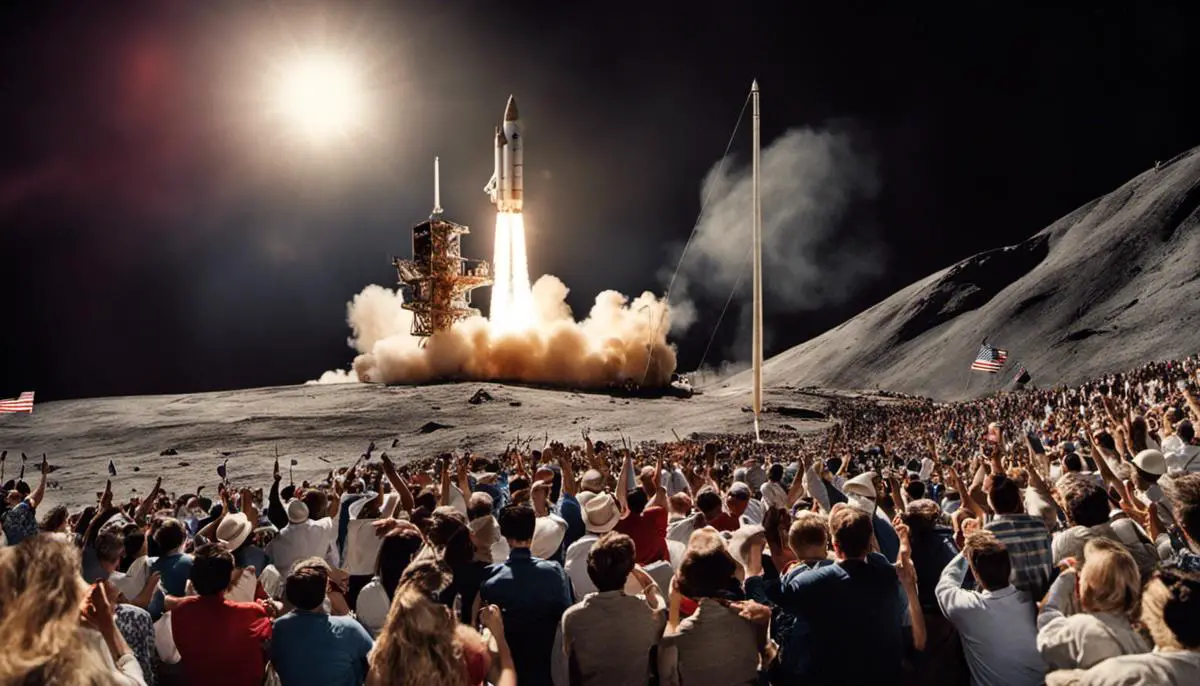
Scientific and academic response
Continuing the discourse, it is equally essential to navigate the scientific harvest the Apollo missions brought forward. One must pay heed to the fact that seldom does an episode in human history parallel the scientific and technological leaps orbiting the Apollo saga. Understandably, the international scientific community approached this, at the core of the space race, with a sense of unprecedented anticipation and excitement.
Indeed, the Apollo program served as a conduit for an explosion of knowledge discovery in multiple scientific domains beyond just space exploration. Remarkably, lunar geology emerged from its cocoon to become a respected scientific discipline. The lunar rocks brought back by the deified Apollo astronauts offered novel, nigh invaluable, insights into the lunar landscape, propagation of celestial bodies, and the history of our solar system. Consequently, post-Apollo, lunar and planetary research saw an ungoverned surge in interest globally, with unprecedented research investments made by many nations.
The technology and engineering feats demonstrated during the Apollo missions stirred widespread ramifications not only for the American scientific community but also for technologists and researchers across the globe. Novel approaches in computing, telemetry, and navigational systems were all seminal offshoots of our attempts to ink human presence on the closest celestial neighbor to Earth. More so, the global academic landscape witnessed a surge in STEM education, inspiring a new generation of scientists, engineers, and astronauts infused with the excitement of cosmic explorations.
Embarking the journey towards understanding the human capacity for adaptation in space, the Apollo missions spurred significant advancements in bioastronautics. The astronauts’ health and performance data, collected across various Apollo missions, seeded research initiatives in understanding and mitigating the physiological effects of space travel on the human body.
An often-overlooked consequence has been the progressive international diplomacy and cooperation in the realm of space exploration. Apollo’s global impact was far-reaching enough to pave the way for treaties like the Outer Space Treaty and, later, the formation of the International Space Station, marking the collaboration of former space race adversaries, namely, Russia and the United States. It allowed the world to envisage space as “the province of all mankind”, engendering an era of peaceful, global space exploration.
Thus, in conclusion, the Apollo missions offered far more than just the triumph of planting an American flag on the moon. It engendered a wealth of knowledge, expertise, and advancements that redefined the course of scientific progress. The ripple effects of these monumental expeditions continue to reverberate, influencing present-day research and technology, while echoing a call to further frontier advancements in the shared quest for knowledge and understanding.
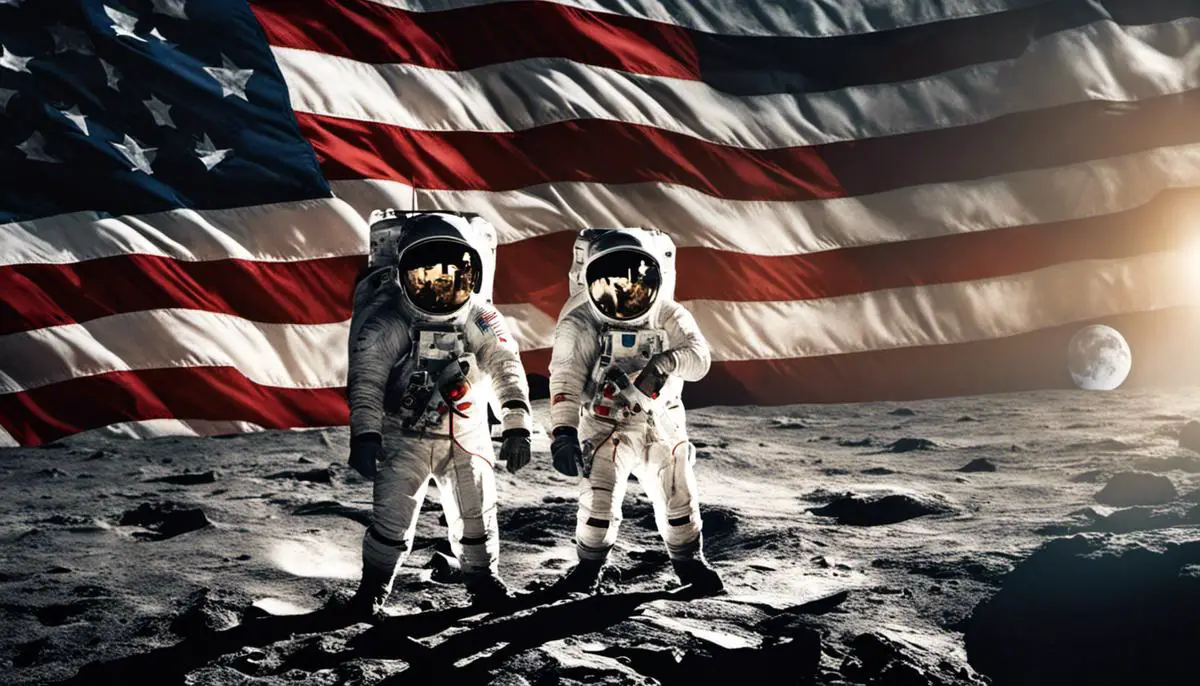
Political implications and diplomatic repercussions
Building on the significant insights hitherto considered, it’s imperative to delve further into the fascinating realm of the geopolitical ramifications that stemmed from the Apollo moon missions. As highlighted earlier, these repercussions were far-reaching and often unexpected, transforming notions of what man could achieve not just in terms of scientific and technological prowess but in the realm of global diplomacy and international relations.
One profound implication lay at the very nexus of these lunar missions – the American-Soviet rivalry. With its successful lunar landing, the United States was effectively claiming symbolic victory in the then-ongoing Space Race, a component of the larger Cold War. This audacious display of scientific prowess certainly altered the power dynamics in international geopolitics, emphasizing the United States’ standing as a superpower. However, it also unsheathed a double-edged sword. While asserting dominance, America concurrently stimulated collaborative potential, inviting global cooperation in the arena of space exploration.
The emphasis on peaceful purposes for lunar exploration in the UN’s Outer Space Treaty of 1967 is testament to this. Signed by both the U.S. and the USSR among many others, this agreement advocated unfettered access to lunar resources for all nations, while prohibiting the placement of any weapons on lunar territory. The Apollo missions’ international impetus significantly amplified the import of such agreements, fostering a sense of shared stewardship over space resources.
In addition, these lunar feats catalyzed a profound shift in the global scientific community. The drama and spectacle of moon landings fused collective public enthusiasm for exploration, into tangible policy actions. In response to this global fascination, many nations initiated or amplified space programs, which rippled into profound scientific collaborations. The International Space Station, a testament to global cooperation, might not be the beacon of international amity it is today, were it not for the doors opened by the Apollo missions.
However, these missions also threw into stark relief the discrepancies in global resource allocation. Apollo sent out a clear message about wealth and capability disparities across nations, sparking controversial debates and prompting many countries, particularly those grappling with socio-economic inequalities, to question the priorities of the global scientific community. Within this crucible of admiration and skepticism, space-exploration gradually revealed itself not just as a scientific field, but as a complex arena where international politics, national pride, and scientific collaboration intersected.
In conclusion, the graveyard tranquility of the Moon witnessed a transformative episode of human history during the 1960s. The Apollo missions, a spectacle of American might, fostered a unity among nations in the quest for the unknown, injected an indomitable spirit of inquiry in the global scientific community, and yet, forced a global re-evaluation of societal priorities and resource allocation. Like the Moon that waxes and wanes yet remains a constant, these missions will remain an enduring hurler of humanity’s audacious impetus to explore, reflect, critique, and advance.
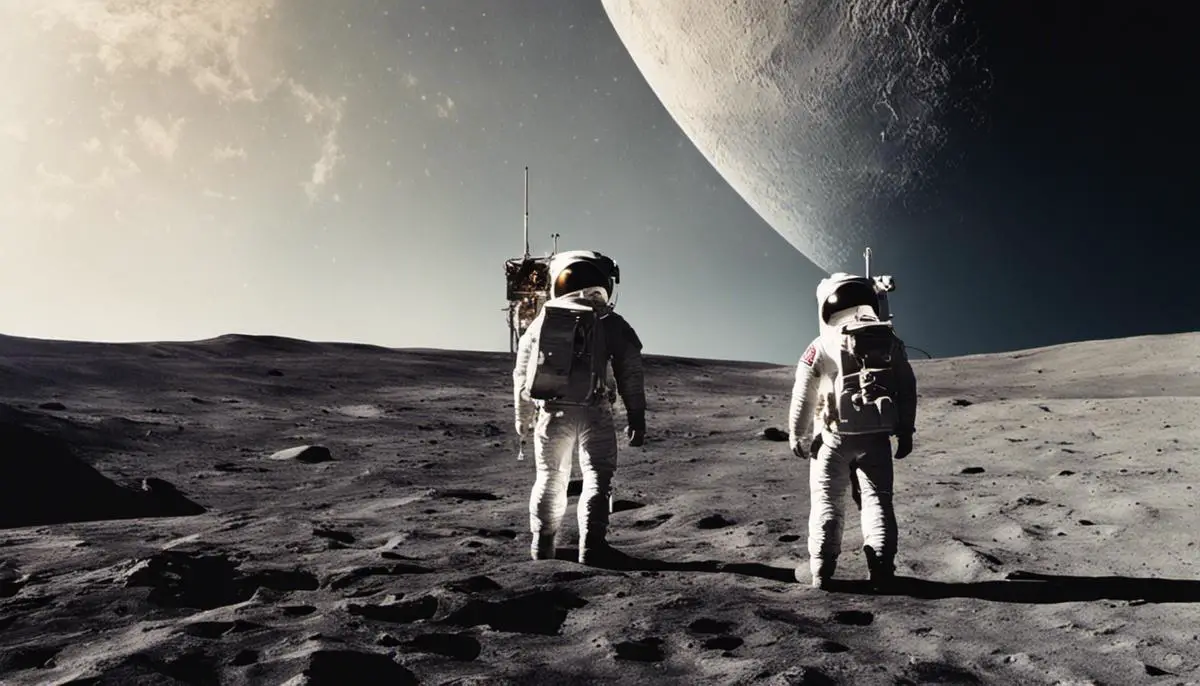
Cultural and historical significance
Shifting Focus: Cultural Narratives and Historical Interpretations of Apollo Missions
The landmark Apollo missions reverberated far beyond the realm of aeronautics or science, transcending the boundaries of time and culture and shaping the collective ethos of humanity. The profound cultural and historical significance of these missions was felt from the epicenters of technological advancement to distant remote societies. The missions became the collective story of mankind’s pioneering spirit, accentuating our ceaseless curiosity, will to explore and constant strive to rise above our limitations.
The Apollo moon missions are a significant chapter narrating the interweaving of geopolitics and scientific explorations. This era was characterized by a palpable American-Soviet rivalry that underscored the space race. The moon landing served as a watershed moment in this tug-of-war for power and prestige, tilting the scales in favor of the United States. Yet, it also illuminated the potential of uncharted symbiotic international collaborations in space exploration.
The journey to the moon was an international endeavor in essence, resonating with the concept of unified cosmic exploration. The United Nations’ Outer Space Treaty in 1967 was a pivotal step towards global cooperation, stressing the exploration of space for the benefit of all countries. The transformative power of the Apollo missions embodied in this movement fostered an atmosphere of mutual collaboration that transcended national boundaries and geopolitical divides.
These anthropogenic lunar endeavors also sparked extensive dialog about the skewed allocation of planetary resources. The celestial aspirations of the world’s most affluent countries were seen against the backdrop of widespread poverty and socio-political turmoil, prompting intense debates. The juxtaposition of these monumental scientific endeavours and the stark realities of socio-economic disparity induced a global re-assessment and recalibration of societal priorities.
The global community absorbed the Apollo narrative, ingeniously integrating it into its educational, philosophical, and sociopolitical fabric. The missions spurred a global surge in STEM education and awakened a greater appreciation of lunar geology. Far from being just a testament to human ambition and technology, they marked an epoch of unprecedented collaboration and the transformation of the global scientific community.
Apollo’s imprint on human history extends far beyond its immediate cultural and political implications. Its lasting legacy lies in its role as a catalyst for global discussions about our civilization’s future, both on Earth and in the novel realms beyond. The missions stimulated our collective drive to explore the unknown and prompted humanity’s interrogation of its place in the cosmos. This profound introspection, intertwined with our ever-persistent thirst for knowledge and understanding, has been the lasting afterglow of mankind’s first successful lunar visit.
The Apollo missions, seen through the prism of these varied cultural and societal perspectives, give insight into a pivotal chapter of global history that changed our perception of the cosmos and ourselves. The harbingers of the cosmic age, the Apollo missions presented a mirror to humanity, reflecting not only our glorious capacities for innovation and exploration but also casting light upon the stark challenges and disparities that persist in our earthly existence.
In conclusion, the constellation of impacts surrounding the Apollo missions—be they scientific, cultural, or political—have been globally impactful and transformative, illuminating humanity’s shared longing, the audacity of the human spirit, and universal quest for knowledge. Each of these dimensions contributes to a nuanced understanding of these missions, showcasing them as a defining moment in human history and a transformative force beyond the realm of space exploration.
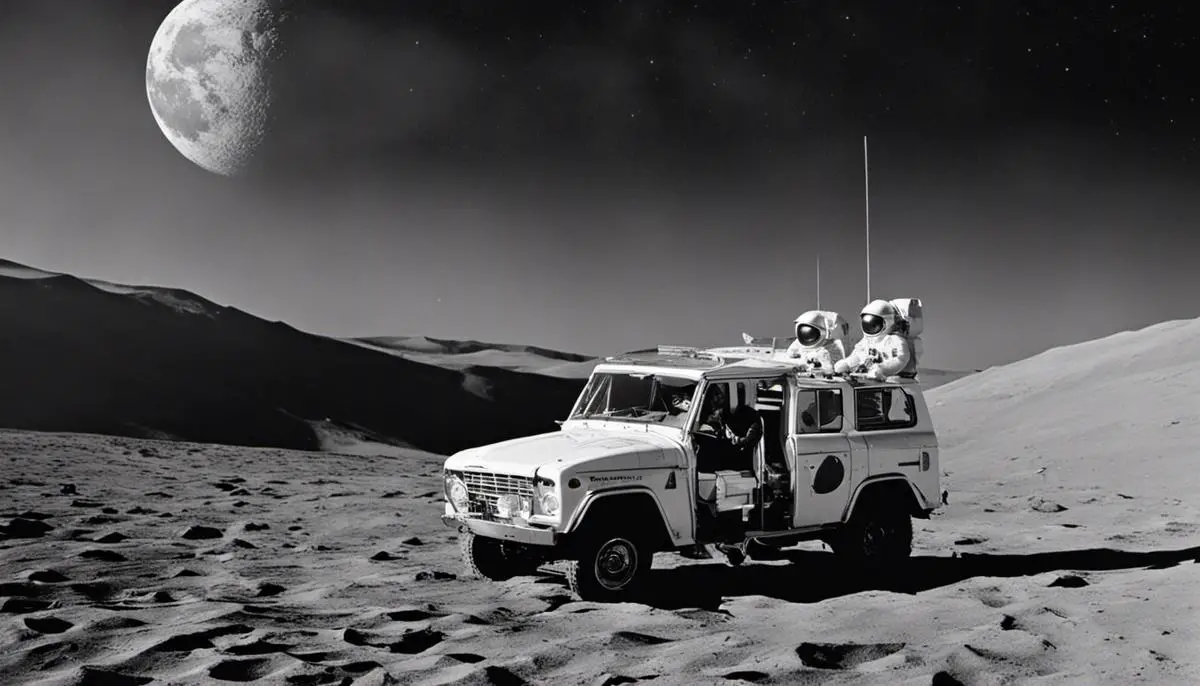
Legacy and long-term impact on International Space Exploration
Undeniably, the Apollo missions proved to be a turning point not only for the United States but for the entire globe. It wasn’t just about sending astronauts to an extraterrestrial body, but heralded advancements in diverse fields, fostering new academic disciplines, promoting global collaboration, and influencing geopolitical relations, consequently leaving a lasting imprint on human history.
Witnessing the technological marvel that was Apollo spurred an era in which scientific and technological advancements took center stage. The success of the Apollo missions catalyzed the rise of lunar geology, enabling insights into the moon’s composition, internal structure, and its early history. These advancements weren’t confined to the lunar sphere. Tasks that required tremendous computing, telemetry, and navigational capabilities during the Apollo missions culminated in advancements that echo in technology to this date.
Moreover, the Apollo missions played a pivotal role in inspiring a generation, driving a surge in STEM-related studies globally. It generated curiosity, ignited imagination, and offered a tangible goal for numerous young minds who aspired to contribute to similar breakthroughs in science and technology. The missions also pioneered bioastronautics, as they necessitated extensive research into the physiological effects of space travel on the human body, advancing our understanding significantly.
Global diplomacy and international space law took a momentous step forward with the advent of the Apollo missions. The Outer Space Treaty, propagated under the United Nations, catalyzed an enhanced understanding of the need for peaceful exploration and the avoidance of weapons of mass destruction in space. The international cooperation championed the establishment of the International Space Station, paving the path for collaborative research previously unimagined.
However, the moon race was not universally celebrated— it also highlighted stark socio-economic disparities. While some nations marveled at the celestial achievements, others questioned the morality and ethics of investing heavily in space exploration amid widespread poverty and socio-political turmoil. The juxtaposition of extraordinary success in space against challenges on Earth triggered a global re-evaluation of societal priorities.
The international rivalry fueled by the Apollo missions had profound geopolitical implications. The contest between the United States and the Soviet Union, initially rooted in Cold War hostilities, transformed over time into a collaborative endeavor as seen through joint initiatives like the Apollo-Soyuz Test Project
No analysis of the impact of the Apollo missions is complete without acknowledging its remarkable influence on human understanding of our place in the cosmos. Far from being a product of a singular nation’s endeavor, the Apollo missions were a testament to humanity’s collective knowledge, ambition, and perseverance.
In conclusion, the Apollo moon missions were not merely an American achievement, but a global phenomenon that reshaped the course of human history. The missions transcended geopolitical, academic, and societal boundaries, acting as a catalyst not only in the advancements of space exploration but fostering geopolitical understandings, inspiring whole generations, and reshaping public perceptions about our place in the cosmos. Indeed, the legacy of the Apollo moon missions continues to ignite the world’s imagination, urging us, as a species, to further our knowledge and understanding while unearthing a spirit of collaboration, innovation, and exploration that defines us.
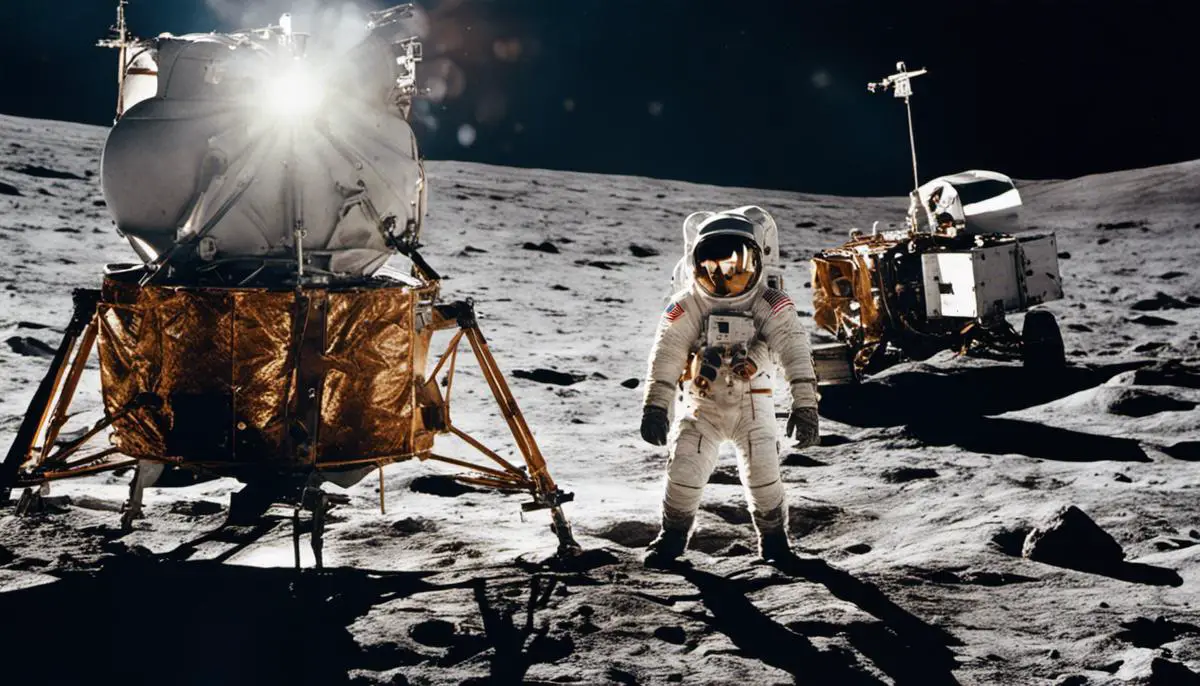
The Apollo moon missions, imprinting man’s footprint on the moon, stand as towering landmarks in human achievement and ingenuity. Their lasting legacy propels us onto new frontiers of exploration and knowledge. Not only did they ignite a global renaissance of scientific discovery and technological development, but they also catalyzed diplomatic dialogs, cultural exchanges, and revision of political ideologies. Forever etched in the annals of history and popular culture, the seeds sown by these missions continue to bear fruits as international cooperation and competition spark fresh ventures into the cosmos. More than a testament to American excellence, these missions are a testament to human potential, resilience, and the indomitable spirit of exploration, connecting us to a broader cosmos narrative that binds all of humanity.

With a passion for unraveling the mysteries of the moon, Dr. Luna Sterling is a highly-respected astrophysicist, a dedicated lunar enthusiast, and a captivating blogger. After earning her Ph.D. in Astrophysics from the Massachusetts Institute of Technology (MIT), she served as a lead scientist and mission planner for NASA, contributing significantly to various lunar missions.
For over two decades, Luna has been at the forefront of lunar science, pushing boundaries and pioneering discoveries that have enriched our understanding of the moon’s geological history. However, it’s her infectious enthusiasm for all things lunar that truly sets her apart.
In an endeavor to bring the moon closer to everyone, Luna started her blog, “Luna’s Lens: A Closer Look at the Moon.” With this platform, she offers a unique blend of intriguing moon facts, updates on lunar missions, and personal anecdotes from her experiences in the field, all told in an engaging and accessible manner.
Luna’s unique blend of scientific expertise and warm, humorous writing style has transformed complex astrophysics into compelling narratives that captivate her audience. As a gifted communicator, she leverages her knowledge and experience to relate scientific facts to everyday life, thus making her blog a must-read for both seasoned space enthusiasts and curious newcomers.
Interactive and inviting, Luna frequently encourages reader engagement through thought-provoking discussions and a monthly ‘Ask Dr. Luna’ feature, where she personally answers questions about the moon and space exploration. A celestial storyteller at heart, Dr. Luna Sterling’s passion for the moon is as vast as the cosmos she explores, making her an invaluable beacon in the world of lunar science.
